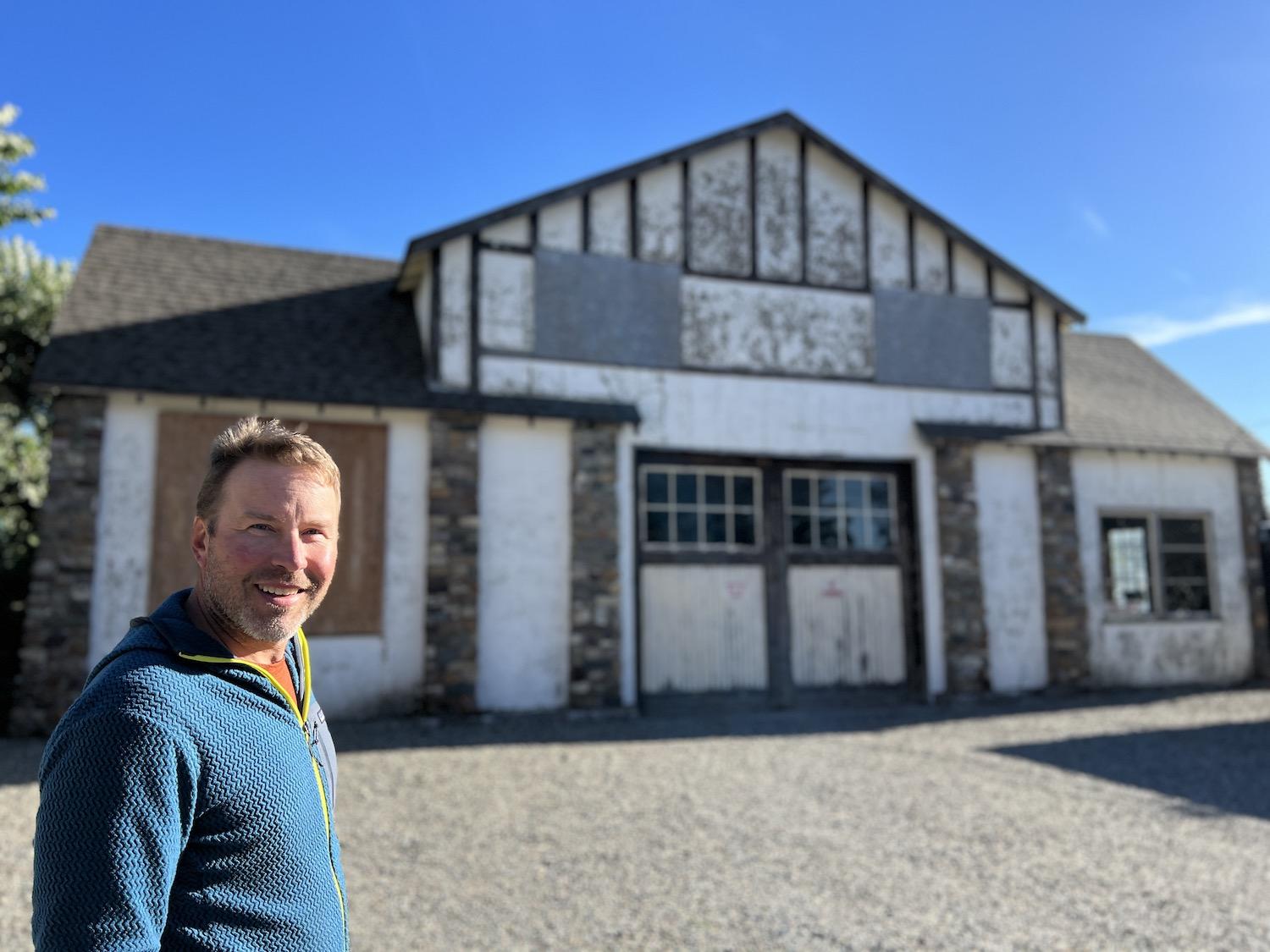
Carey Tetzlaff, lead guide with Tamarack Outdoors in Waterton Lakes National Park, stands in front of the company's warehouse that famously appeared in season one, episode eight of the hit HBO TV series, The Last of Us/Jennifer Bain
Of all the typically wholesome reasons to visit a national park, to see where a post-apocalyptic TV series was filmed isn’t usually one of them.
But when I stand on the windy hill behind the Prince of Wales Hotel overlooking Waterton, I’m thinking about how bleak the Alberta townsite looked covered in snow in the opening scene of episode eight of The Last of Us when it stood in for the fictional resort town of Silver Lake, Colorado.
And later when Carey Tetzlaff, the lead guide with Tamarack Outdoors, unlocks the door to the company’s distressed white warehouse building down on Mountain View Road, I’m remembering what Joel (Pedro Pascal) found inside it while trying to save Ellie (Bella Ramsey) from a self-proclaimed pastor and his wan group of religious survivors.
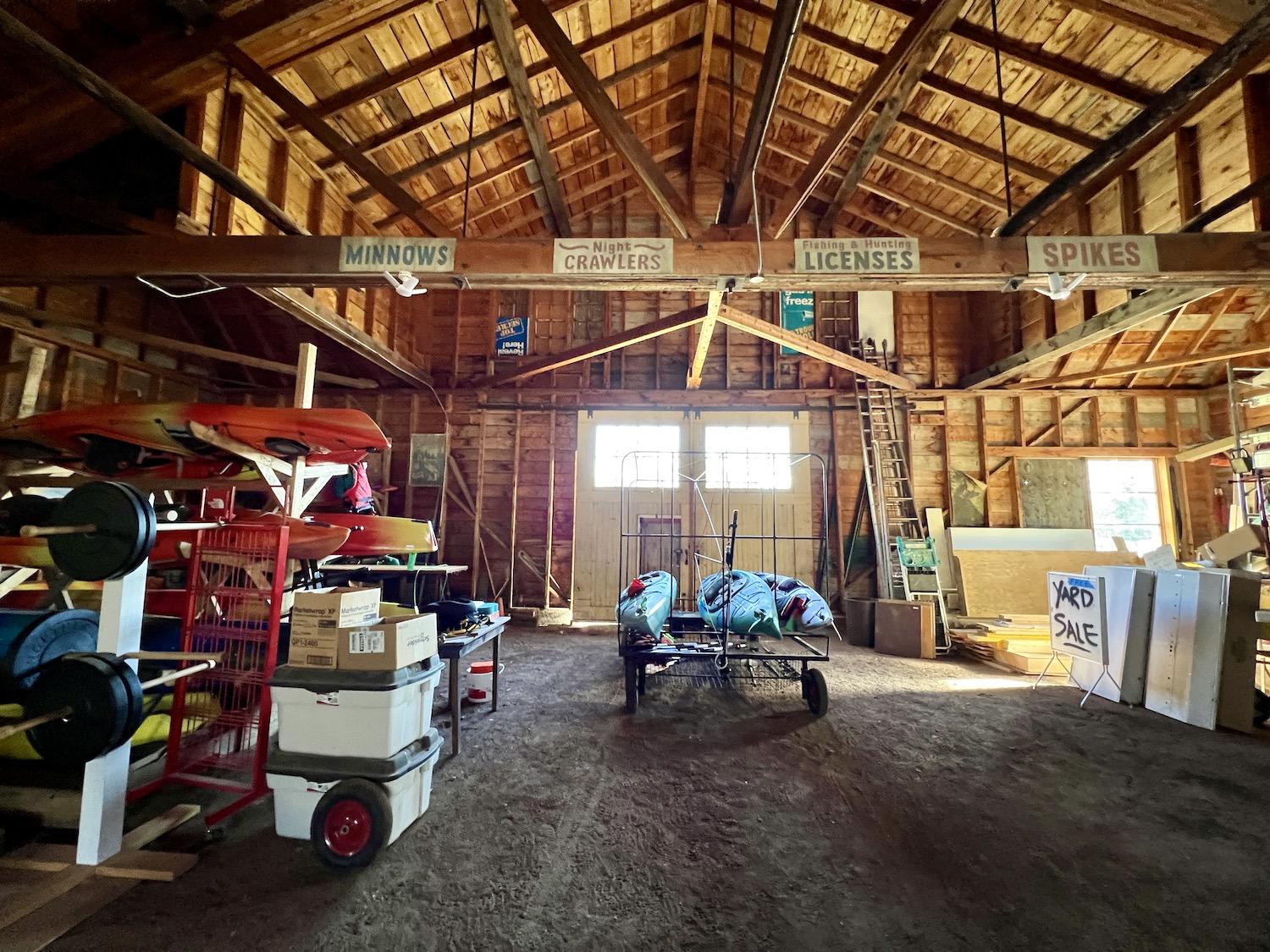
In the HBO megahit The Last of Us, bodies hung from the rafters of what's actually a warehouse for Tamarack Outdoors in the Waterton Lakes National Park townsite/Jennifer Bain
“His horse is dead in the corner and they’ve cut parts off it — and right there on that back beam that has the words minnows and night crawlers on it, they had bodies hanging there,” Tetzlaff says, pointing to rafters above his kayak trailer. “So Pedro Pascal realizes that there’s cannibal activities happening in town.”
The crews filmed in February 2022 and Tetzlaff recalls “it was amazing because suddenly the town felt kind of alive in a weird way with burned-out cars parked all over the street. But it was a great thing for Waterton. It was good exposure. Maybe it highlights that hey, if you’re doing an apocalyptic movie, come to Waterton in winter time.”
Waterton Lakes National Park, just north of Montana’s Glacier National Park, is the smallest park in the Canadian Rockies but don’t call it a hidden gem. Most visitors come between June and August and this year that meant a respectable 313,337 people. Not bad for a town that swells to 3,000 in the summer but drops below 60 in the winter.
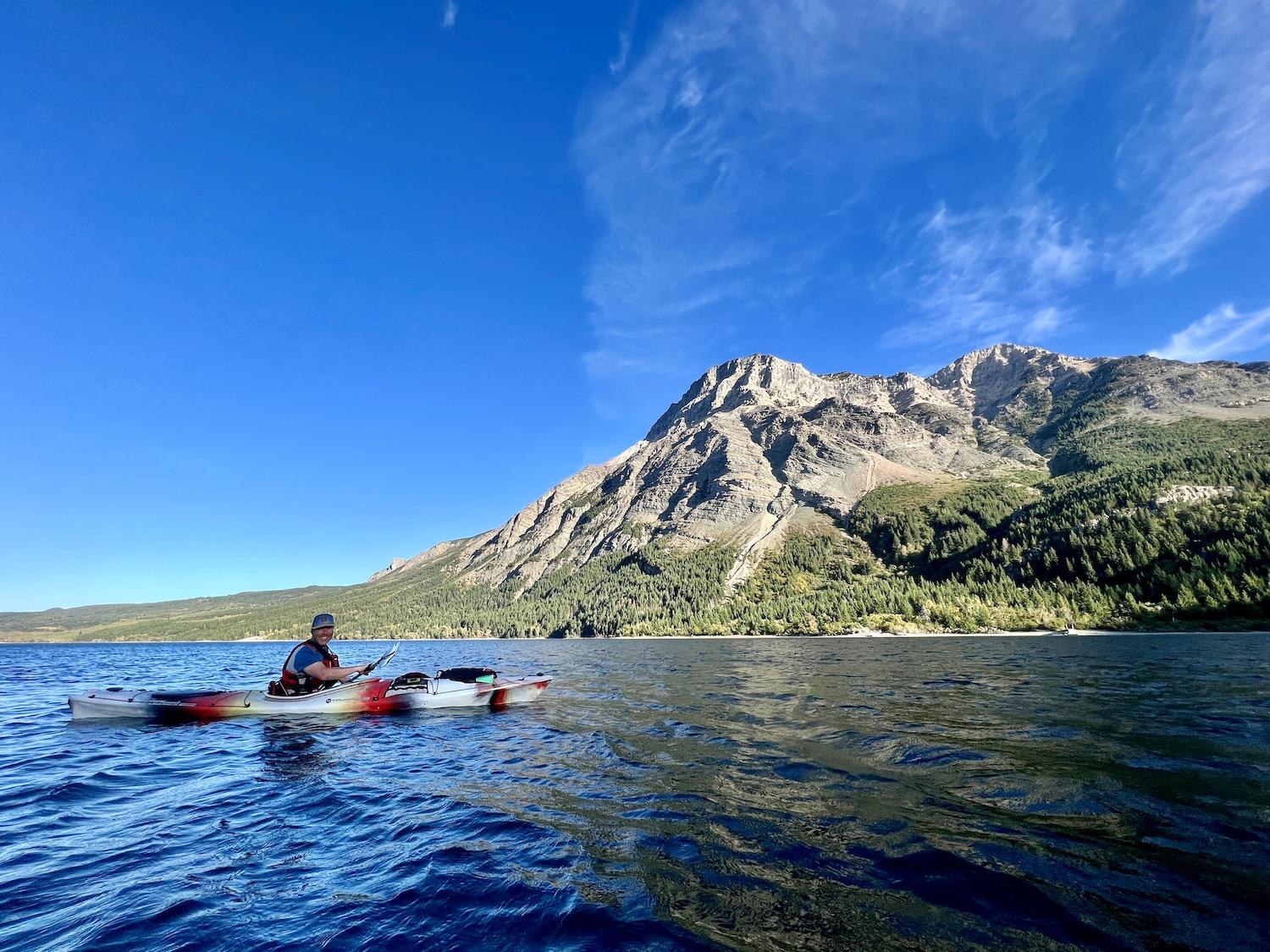
Carey Tetzlaff, lead guide with Tamarack Outdoors in Waterton, kayaks on Middle Waterton Lake in September/Jennifer Bain
I visit for three nights in September when the crowds are thinning, the weather is perfect and that end-of-season feeling is in the air.
Tetzlaff takes me kayaking for two hours at sunset on Upper Waterton Lake and Middle Waterton Lake which are linked by the Bosporus, named for a strait in Turkey that connects the Black Sea with the world’s oceans.
The next morning, we meet at Tamarack’s store and Switchback micro café, across from the warehouse, for a breakfast bun and green smoothie. Tetzlaff married into the local family that has run the outfitting company since 1922 and now concentrates on offering shuttles and guided hikes and kayaking trips.
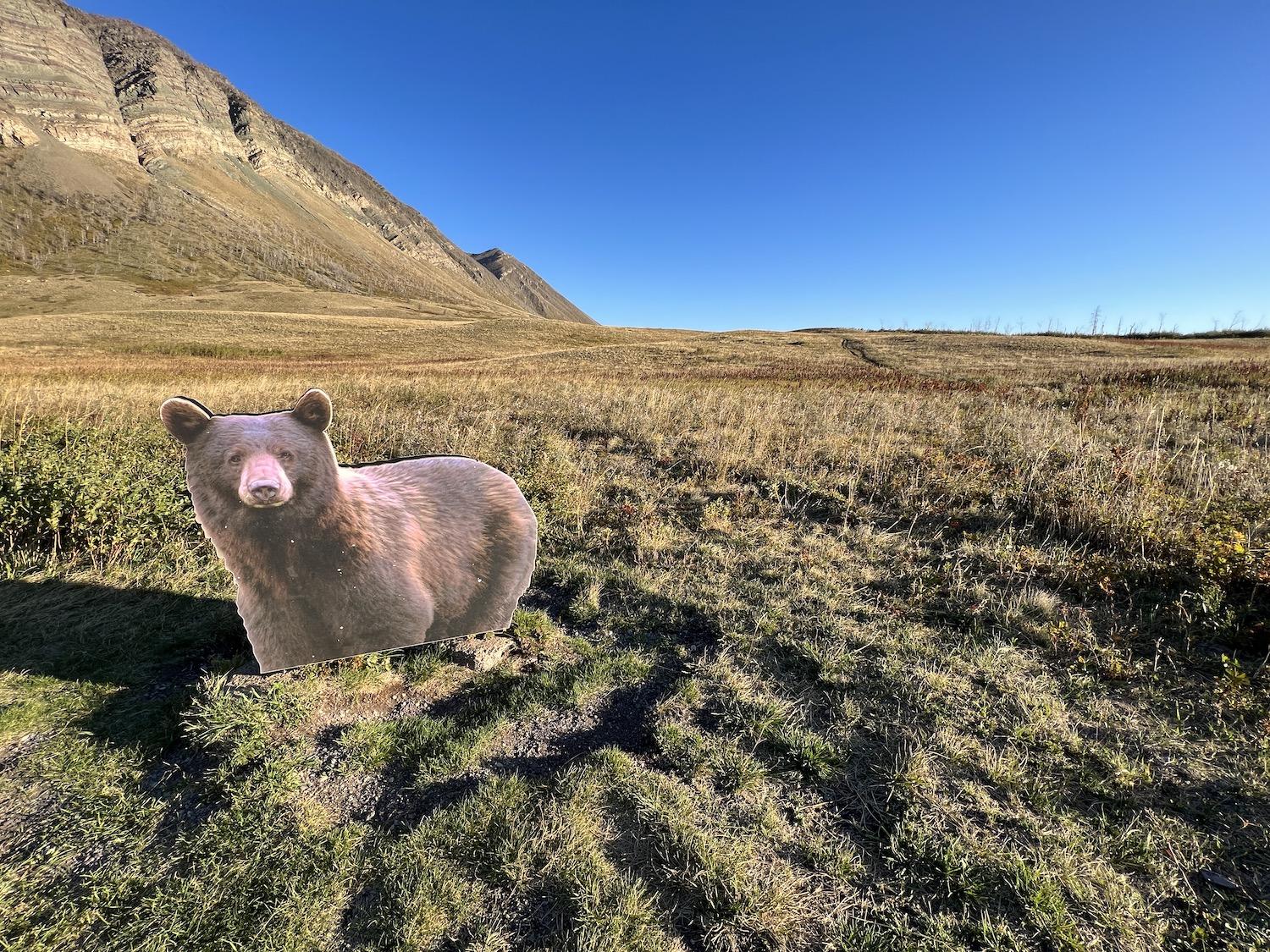
A life-size bear cut-out stands along the Red Rock Parkway in Waterton Lakes National Park near a sign warning people it's berry season and to watch for bears/Jennifer Bain
I’m anxious about exploring a mountain park that’s home to black bears, grizzly bears and cougars, so instead of buying bear spray and setting off alone, I take a Waterton Shoreline Cruise to Glacier's Goat Haunt for 30 precious minutes in America, no passport needed (more on Waterton-Glacier International Peace Park in an upcoming story).
I also hop on Tennessee Walker named Mango for a day-long trail ride with Alpine Stables. On the early morning drive down Red Rock Parkway to the rendezvous point, I spot a black bear by the side of the road.
Josh Watson, a teacher whose family established the stables in 1969, is my guide. Beginning at Red Rock Canyon, we ride up the valley to a magical spot called Twin Lakes for a picnic lunch, spotting bighorn sheep and mountain goats in the distance along the way. We don't see any bears but do see signs (scat, claw marks on trees, fur caught in tree bark) that they frequent the area.
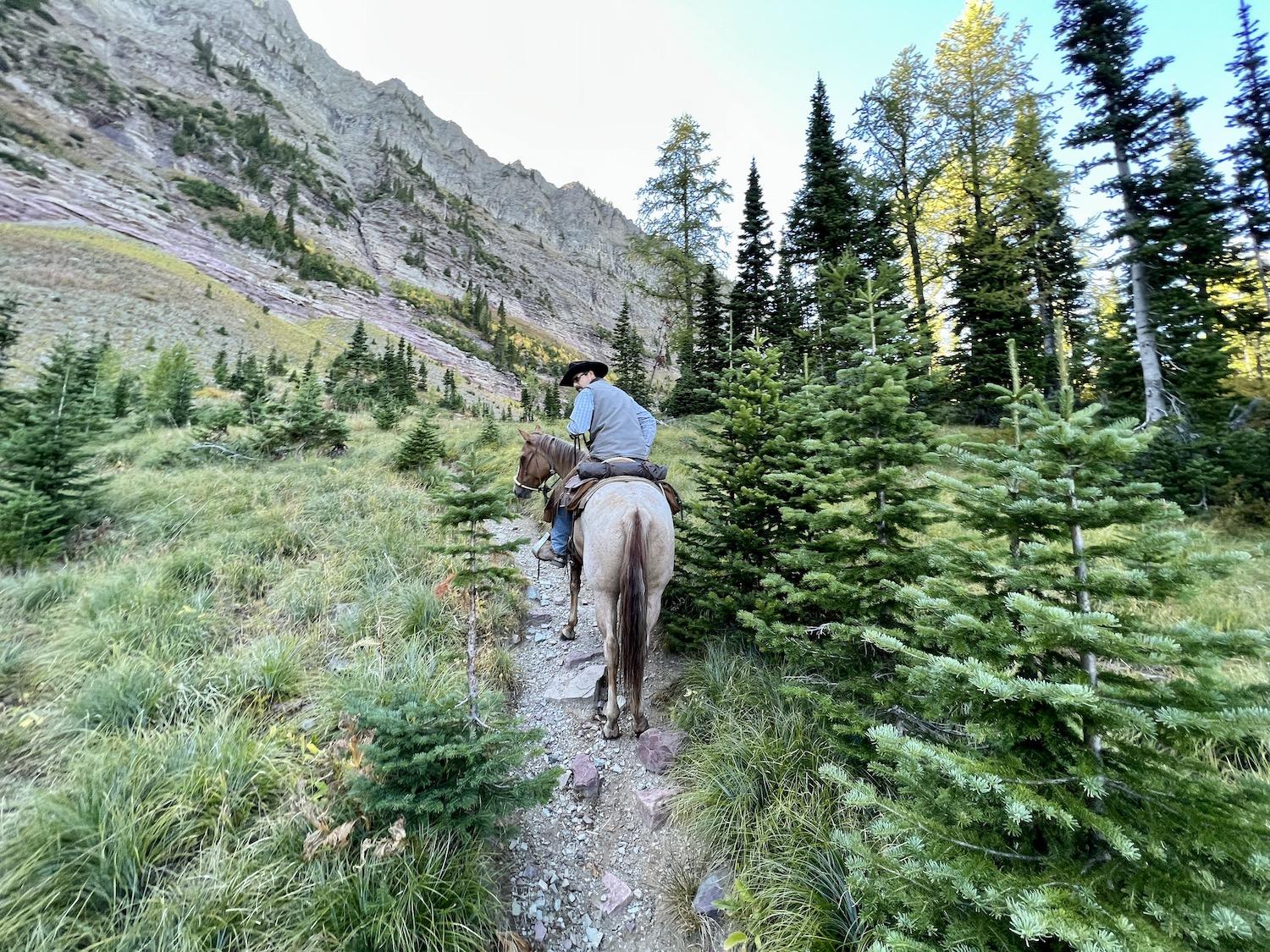
Josh Watson, from Alpine Stables, leads people on a day-long trail ride to Twin Lakes in Waterton Lakes National Park/Jennifer Bain
We ride slowly and quietly through sheltered patches of healthy forest, but also bleak exposed spots that were burned in the Kenow Wildfire of 2017.
Not a conversation goes by in Waterton without mention of the dramatic fire that started in British Columbia after an intense lightning and thunder storm on Aug. 30, 2017, forced an evacuation on Sept. 8 and burned about 19,000 hectares (48,000 acres) in the park alone by Sept. 11.
Parks Canada says more than 80 per cent of Waterton’s hiking trail network was affected. Alpine Stables, the visitor center, Crandell Mountain Campground, Canyon Youth Camp buildings, staff housing and associated infrastructure such as water and electrical systems were destroyed.
Six years later, Alpine Stables has a new barn and house, the park has a modern new visitor center, the wildlife is thriving and the scorched land is rejuvenating itself.
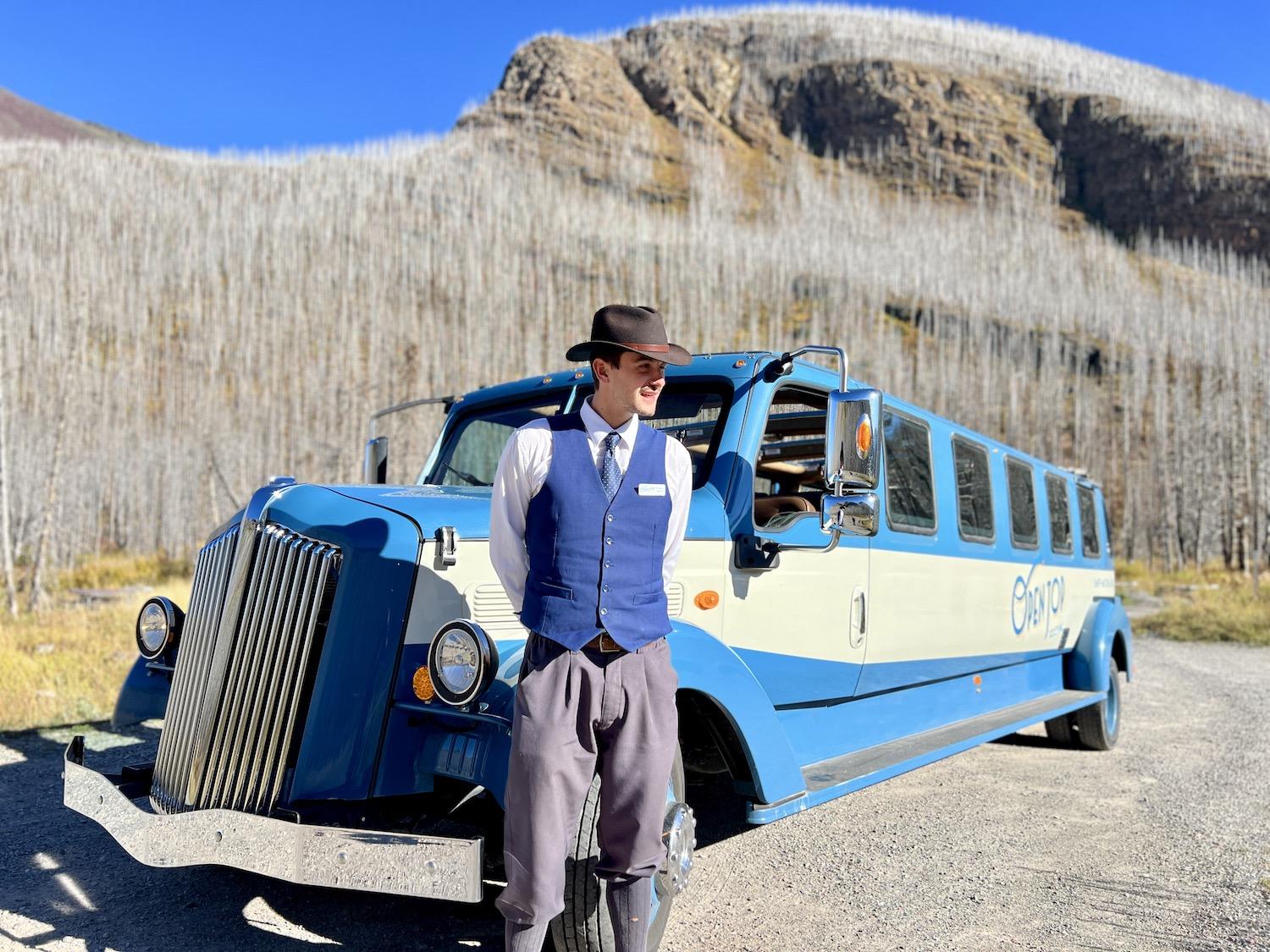
Open Top Touring guide/driver Patrick Liebmann stands along the Akamina Parkway in front of park forest impacted by the Kenow Wildfire of 2017/Jennifer Bain
Still, when I cruise down the Akamina Parkway with Open Top Touring, I see a landscape filled with charred trees.
My guide this time is Patrick Liebmann and he’s wearing a period costume to go with the vintage-inspired stretch automobile that was custom made by Ford to have the look and feel of the 1930s. The legendary Brewster brothers, he tells me, began guiding visitors through Banff National Park in the late 1800s by horse-drawn carriage and then moved on to vehicles like these.
Owned by the Banff Jasper Collection by Pursuit, Open Top Touring has two vehicles in Banff, one in Jasper National Park and one in Waterton. I’m the only guest on a vehicle that holds 19 people (not counting the front seats), and get to listen to Benny Goodman while hearing colorful tales of the park.
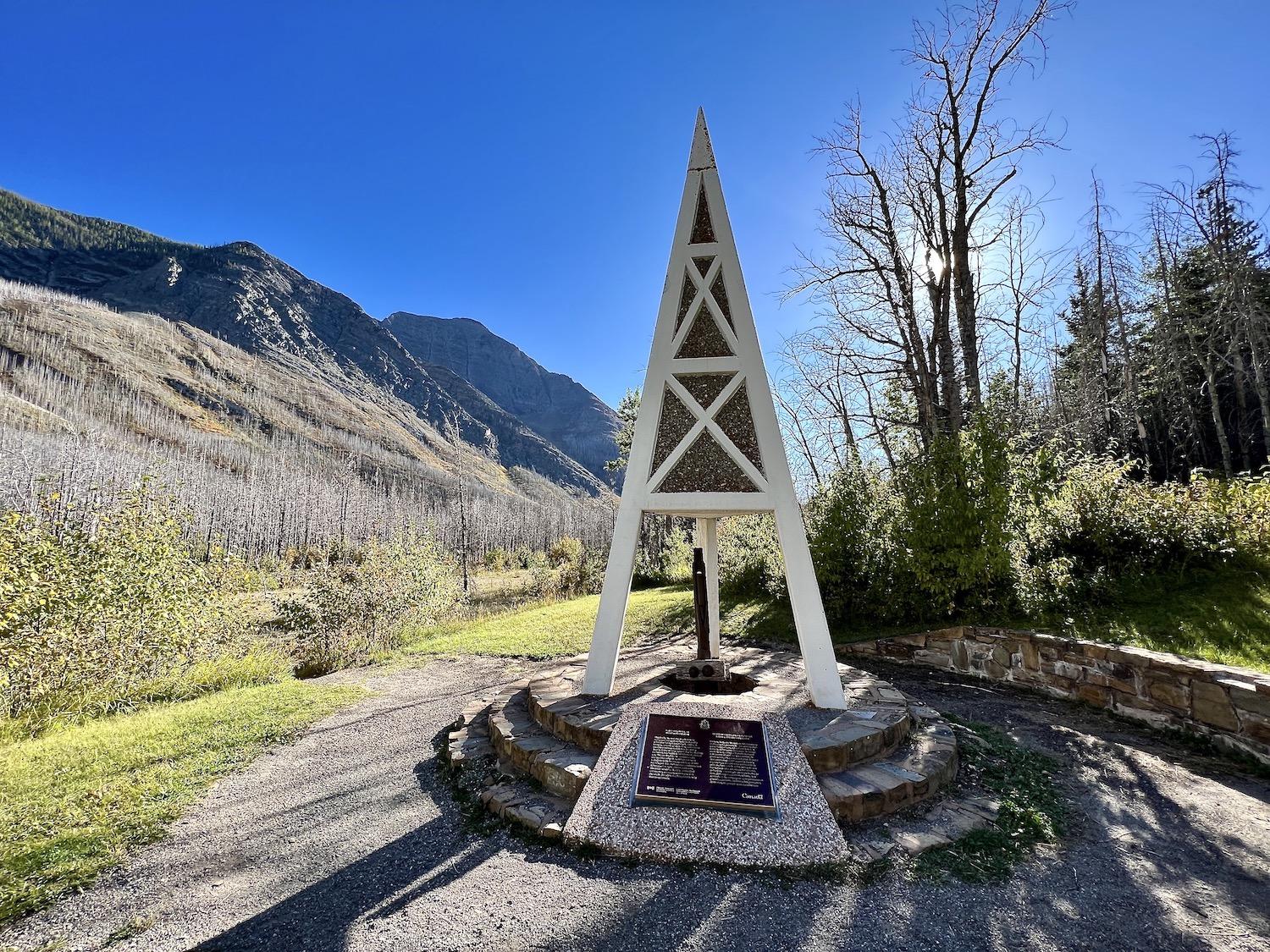
A monument shaped like an oil derrick stands at the First Oil Well in Western Canada National Historic Site along the Akamina Parkway/Jennifer Bain
Liebmann usually only points out the First Oil Well in Western Canada National Historic Site, but since I’m the only guest he stops so I can photograph the oil derrick-shaped monument.
In 1902, the Rocky Mountain Development Co. struck oil here at a depth of 311 metres (1,020 feet). The oil well never yielded the expected flow of 300 barrels a day, but it did ignite Alberta’s passion for petroleum exploration.
As for Waterton, its name, boundary and status have evolved since it was created in 1895 as Dominion Forest Park. The name comes from the Waterton Lakes, a chain of lakes named by Thomas Blakiston — a member of the Palliser expedition that surveyed western Canada — to honor British naturalist Charles Waterton who invented a new method of taxidermy.
The park is actually open year-round but has limited visitor services between November and April.
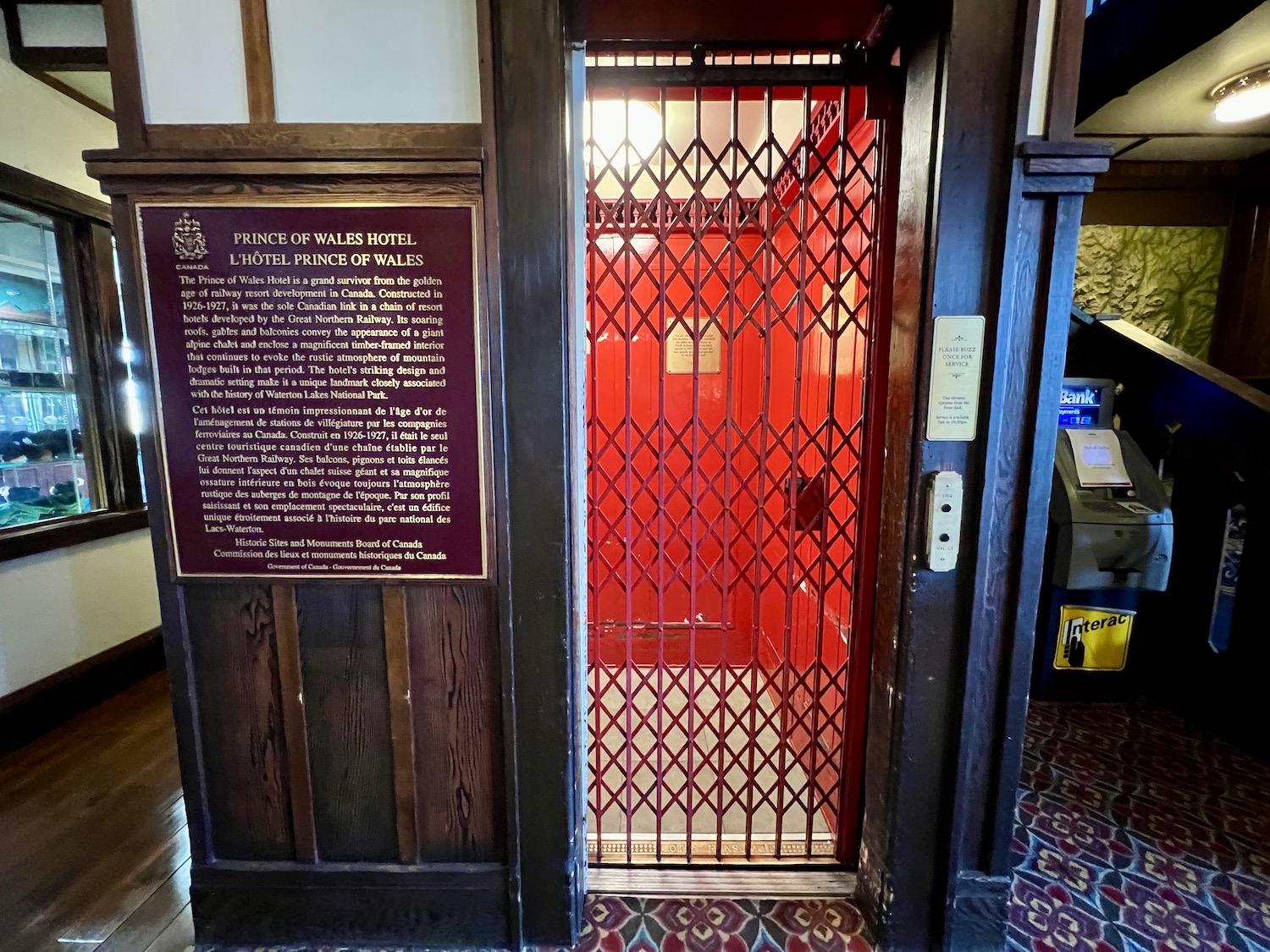
A plaque for Prince of Wales Hotel National Historic Site is on the wall of the hotel's lobby next to the vintage elevator/Jennifer Bain
My driving tour ends on the hill overlooking the townsite where my visit began — at what's actually the Prince of Wales Hotel National Historic Site.
The Pursuit-owned hotel is about to close for the season but not before I learn how it was built in 1926-27 during one of Waterton’s windiest and snowiest winters. It was the sole Canadian link in a chain of resort hotels developed by the Minnesota-based Great Northern Railway. Affluent visitors once rode the train to Glacier for wilderness adventures, some then opting to visit Goat Haunt’s backcountry ranger station and take the M.V. International to this grand hotel before being bussed back to Montana to catch trains home.
These days the hotel boasts afternoon tea in the Royal Steward Dining Room overlooking the lake, and free public history talks every night at 8 p.m. in the lobby. (To avoid the hefty parking fee, park in the lot for the Bear's Hump hike, cross the road and walk up the access road to the hotel.)
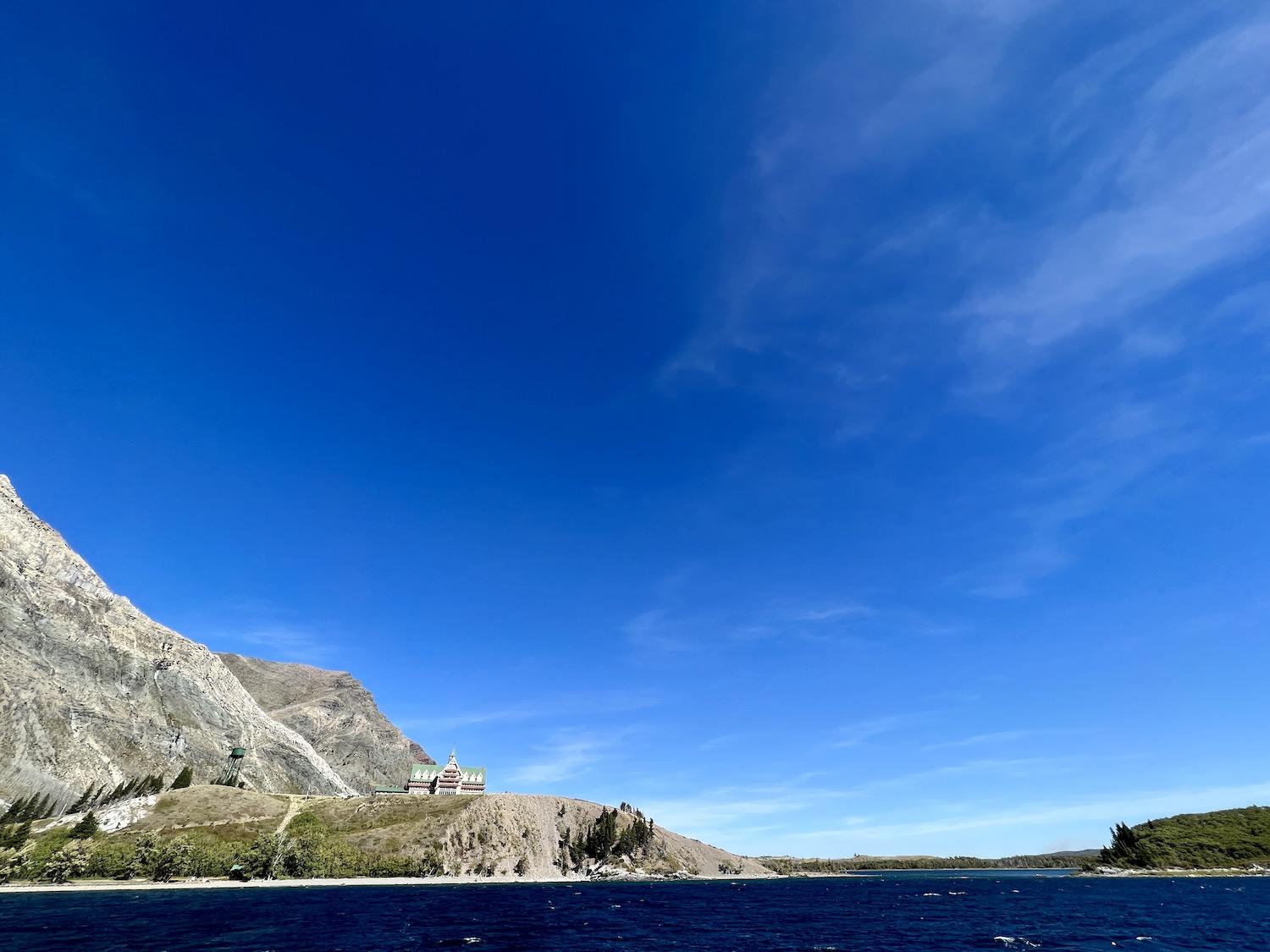
Set high above the townsite in Waterton Lakes National Park, the Prince of Wales Hotel is the Alberta park's most iconic landmark/Jennifer Bain
Be sure to admire the hotel from all angles. It looks like a giant alpine chalet with its peaked roofs, gables, balconies and timber-frame interior. It was declared a national historic site in 1993 for its architectural style and its contribution to tourism in the mountains, and has a commemorative plaque in the lobby by what's reportedly the oldest working, hand-operated elevator in North America.
The hotel is named after Edward, Prince of Wales, who later became King Edward VIII. It was a failed publicity attempt to lure the prince into staying at the hotel while he toured Canada. Edward later famously abdicated the throne to marry divorcee Wallis Simpson, but the name stuck.
The storied Prince of Wales Hotel has long been Waterton's most recognized landmark. The deliciously distressed Tamarack warehouse, despite its recent cameo in The Last of Us, admittedly isn’t in the same league. But both these intriguing buildings are worthy of attention from those of us who admire the cultural — and not just natural — heritage of our parks.
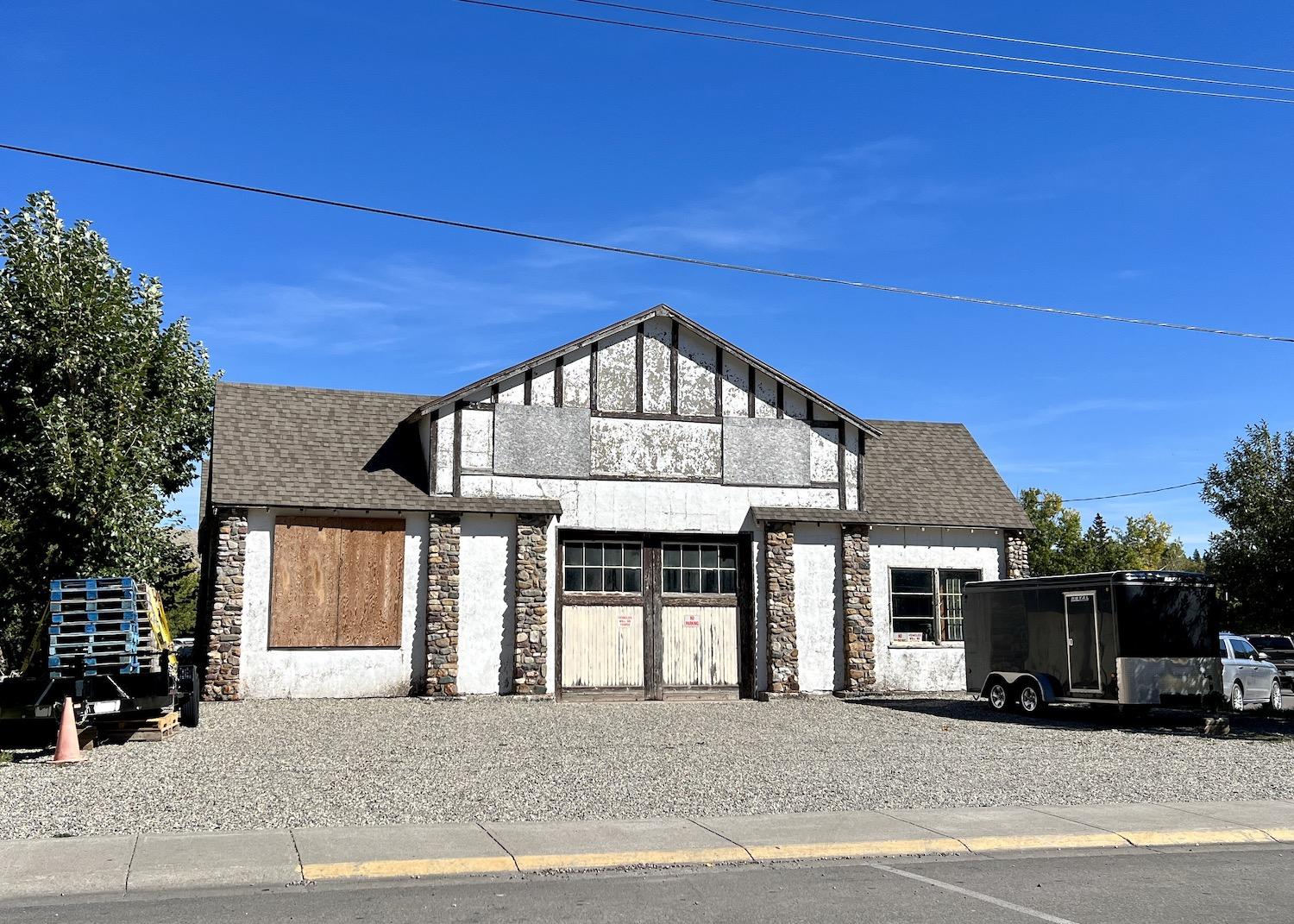
A distressed warehouse belonging to Tamarack Outdoors, which appeared in The Last of Us, stands along Mountain View Road in the Waterton townsite/Jennifer Bain


